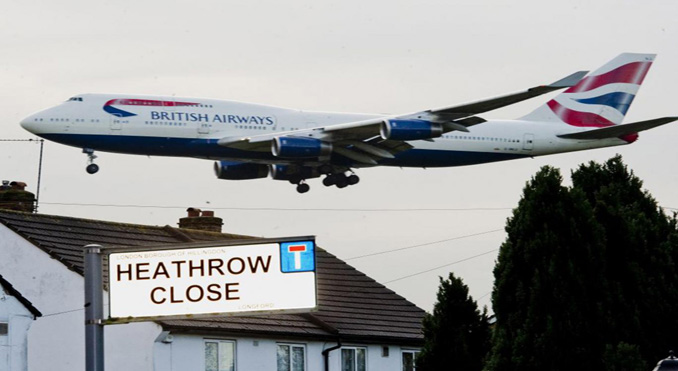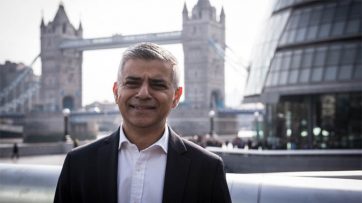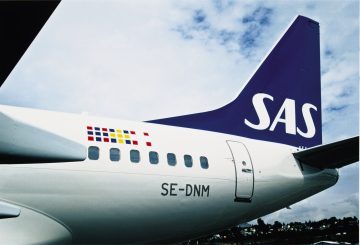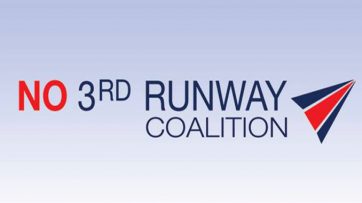A new report published by the Mayor of London has revealed the astonishing cost to the health of Londoners of a third runway at Heathrow.
The report reveals that the long term health effects of exposure to the extra noise caused by a third runway would be valued at a staggering £20 to 25bn over 60 years.
The Mayor said that there was no silver bullet for Heathrow’s noise nightmare and that the only credible solution to Britain’s aviation dilemma was to pursue plans for a new hub airport to the east of the capital, away from populated areas.
Overwhelming case against Heathrow expansion
Despite the owners’ bold claims about the potential of improved technology and quieter engines, building a new runway would fail to curtail the effect of the din of jet engines on local people. In fact it would unnecessarily expose 124 more schools and 43,000 school children to a level of aircraft noise proven to affect their level of reading and memory, than if the airport were to remain with two runways.
In the new report: ‘Landing the right airport’, the Mayor’s team set out the overwhelming case against the expansion of Heathrow – and the logic behind building a four-runway hub to the east of London.
Key points made included:
- All sides agree, at least half a million people will be exposed to a significant level of noise from a third runway – more than the five main rival European airports combined. And if flight routing is not optimised then that figure reaches nearer one million people.
- An analysis of evidence provided by the Airports Commission reveals that on a like-for-like basis a third runway would expose 124 more schools and 43,200 more schoolchildren to an unacceptable level of noise compared to no expansion.
- Guidance published by the Department for Transport in December has allowed the Mayor’s team to calculate the health impact of an expanded Heathrow as costing £20 to £25bn over 60 years. That reflects the increased risk of heart attack, stroke, dementia and other disorders shown to be linked to prolonged exposure to aircraft noise.
A third runway will mean more than double the number of surface access journeys to and from the airport – and in order to keep the numbers on the road manageable, the Commission’s own consultants propose that an airport access charge of £20 to £40 for every car/taxi could be needed. That would in turn mean the number of public transport journeys to and from the airport would jump from around 80,000 a day now to over 300,000 a day. That scale of demand could not be accommodated without major unbudgeted investment in rail infrastructure.
- An expansion at Heathrow would require the airport to triple its debt and equity levels. That would be an unprecedented level of debt for a private airport and the Government would almost certainly need to step in to secure their funding.
- The Airports Commission’s own data reveals a three-runway Heathrow would be full in 2030 and subject to the same problems of congestion and delays that the airport faces today – and with little improvement in connectivity that UK business so clearly needs.
- Only a four-runway hub airport in one of several potential locations to the east of London has any chance of being built and delivering the increase in connectivity the UK requires. A hub to the east of London would spur regeneration and new housing, contribute £92bn to the UK economy by 2050 and support 336,000 jobs around the country.
The Mayor of London, Boris Johnson, said:
“There is no silver bullet for the noise nightmare of a third runway at Heathrow and any approval of expansion would clearly result in decades of legal challenges. Its cramped urban location simply cannot accommodate the kind of airport this country requires to compete on the global stage and the cost to the taxpayer of necessary road and rail connections would be huge, however well disguised. That means the Government has a bold decision to make – but not a difficult one. They must surely finally recognise that the only long term vision that sustains our economy and safeguards our health is to build a four runway hub airport at the Thames Estuary or Stansted.”
Gatwick is not the answer
The report also made it clear that a second runway at Gatwick would not be the answer to the UK’s aviation problems. It has already benefited from the constraints at Heathrow and offers useful links to overseas hubs and holiday destinations. But even the Airports Commission belatedly recognised that the delivery of a hub airport must be the aim. A second runway at Gatwick would not give us that hub.
In December 2015 the Government recognised that it did not have the evidence to be able to justify an expansion of Heathrow. The Mayor is now calling on them to consider the full range of credible alternatives. They will need to face down the vested interests who are set on an expansion of Heathrow that is not in the national interest. But he is clear that in order to secure the connectivity needed to support future growth and prosperity, and without a dire impact on public health, we must do better than Heathrow.
N.B. Image credit: wikipedia.org







